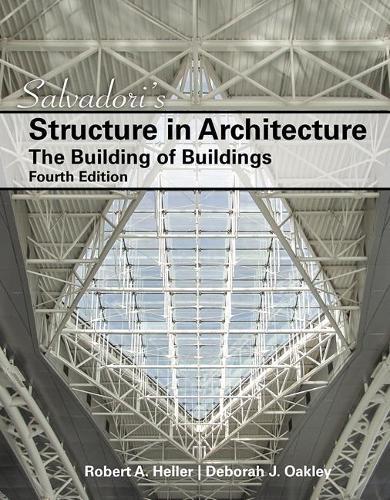Full Product Details
Author: Mario Salvadori ,
Robert Heller ,
Deborah Oakley ,
Robert Heller
Publisher: Pearson Education (US)
Imprint: Pearson
Edition: 4th edition
Dimensions:
Width: 10.00cm
, Height: 10.00cm
, Length: 10.00cm
Weight: 0.100kg
ISBN: 9780132803205
ISBN 10: 0132803208
Pages: 240
Publication Date: 26 May 2016
Audience:
College/higher education
,
Tertiary & Higher Education
Format: Hardback
Publisher's Status: Active
Availability: Available To Order

We have confirmation that this item is in stock with the supplier. It will be ordered in for you and dispatched immediately.
Author Information
Robert A. Heller, PhD, PE, was educated at Columbia University, where he joined the faculty of Civil Engineering. He was a colleague and coauthor of Professor Mario G. Salvador’I’s on the first three cited editions of this book, and also served as coauthor of Video Series: Mechanics of Structures and Materials. He was Professor of Engineering Science and Mechanics at Virginia Tech from 1967 to 1996 where he taught undergraduate and graduate courses. He created educational movies for the National Science Foundation and performed research for the Department Of Defense on Aircraft Fatigue, Service life Prediction of Solid Propellant Rocket Motors, Strength and Durability of New Space Age Materials. His work has been published in numerous scientific and Technical Journals. As a teacher he has received several awards and honors including an Honorary Professorship from the Technical University of Budapest, Hungary and a Fulbright Scholarship at the Technical University of Vienna, Austria. He retired in 1996. Deborah J. Oakley, AIA, PE, has been teaching structures to architecture students for nearly 20 years. She is an associate professor at the School of Architecture at the University of Nevada, Las Vegas, where she also teaches design studio classes. Uniquely qualified as both a Registered Architect and Professional Engineer, she came to academia with education and experience in fields of both civil (structural) engineering and architecture. She is a passionate crusader for the integration of architecture and structure, including associated educational endeavors in the field. She is a founding member, past president, and board member of the Building Technology Educators’ Society (BTES online.org), the only North American academic organization of architectural educators focused on construction and structural technology education and research. Prior appointments have been as an assistant professor at the University of Maryland School of Architecture, Planning and Preservation and at the Philadelphia University School of Architecture and Design. Her current work involves conducting Discipline-Based Education Research in the area of architectural structures pedagogy.




